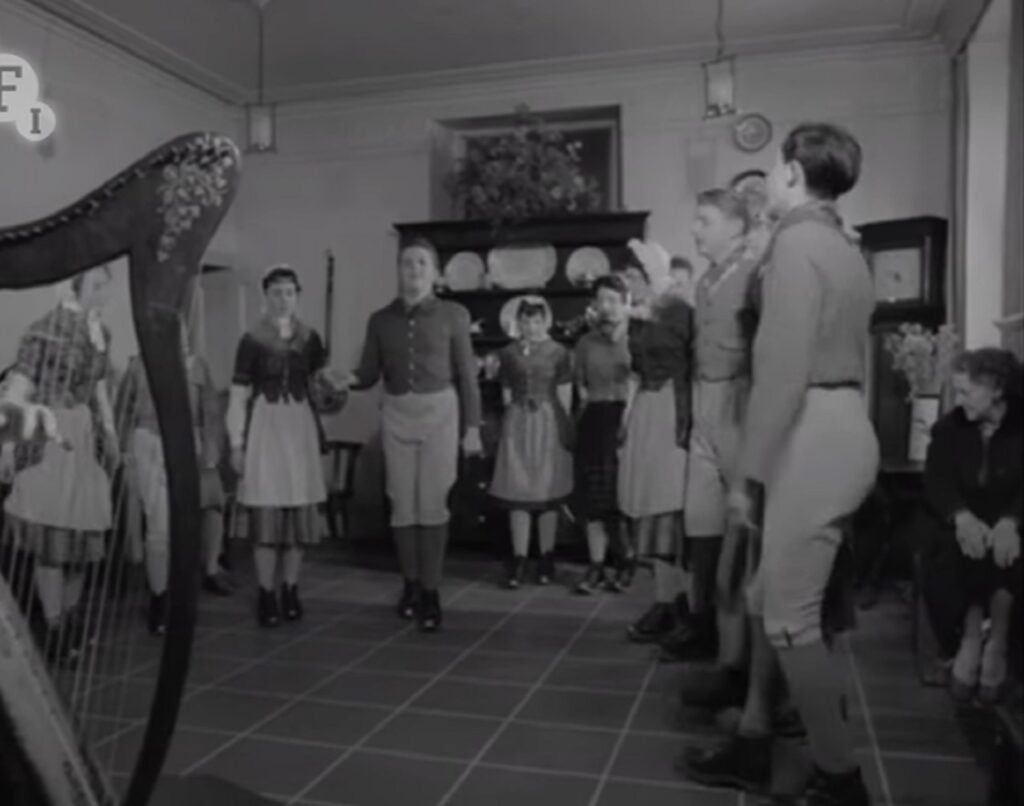Clog dance, an energetic and rhythmic tradition, has long been a significant part of Welsh culture. With roots deeply planted in the everyday life of the working class, this dance form carries a distinctive beat that reflects the spirit of a people whose livelihoods were often tied to industry, maritime pursuits, and craftsmanship. In 1959, the small town of Porthmadog in North Wales stood as a vibrant hub where this tradition not only survived but thrived. As captured in the documentary Clog Dance (1959) by the BFI National Archive, the town became a living proof to the enduring appeal of clogging.

Porthmadog, with its rugged cobblestone streets and coastal charm, becomes a central character in the story of clog dance. The rhythmic clattering of wooden-soled shoes echoes through the narrow lanes, creating an atmosphere that’s alive with energy. Clog dance in Porthmadog wasn’t just a form of entertainment—it was a way of life, a soundscape that resonated through daily routines, community events, and even local festivals.
At the center of this tradition is John Edwards, a master clogmaker whose skill and craftsmanship play a vital role in the preservation of the dance. Edwards’ workshop, filled with the smell of freshly carved wood and the clatter of traditional tools, stands as a symbol of Welsh heritage. His handcrafted clogs, each pair a work of art, represent more than footwear—they embody a legacy of skilled trades passed down through generations. Edwards’ work reflects a dedication not only to his craft but also to the community, where these clogs became the very heartbeat of the dance.
Another key figure in Porthmadog’s clog dance revival is Mrs. Thomas, the local dance instructor whose passion for teaching the next generation has kept the tradition alive. Her role goes beyond simple instruction—she acts as a cultural ambassador, blending Welsh dance with international influences, making it appealing to the younger audience. Mrs. Thomas’ classes are filled with stories of past dances, the historical significance of each step, and a strong sense of belonging that keeps the spirit of Welsh folk alive in modern times.
The origins of clog dance trace back to the everyday lives of sailors, miners, and mill workers who found joy in creating music through their footwear. Unlike polished ballroom styles, clog dance emerged from practical roots—workers would tap out rhythms during breaks or celebrations, turning mundane routines into expressions of joy. The regional variations that developed across Britain reflect how different communities added their own flair to the dance, but in Porthmadog, the dance retained a distinctly Welsh character, intertwined with local traditions and dialects.

The preservation of clog dance is more than just about maintaining a historical curiosity—it’s about safeguarding a piece of cultural identity that tells the story of generations past. As we watch the documentary Clog Dance (1959) or witness a live performance, we are reminded of the importance of keeping such traditions alive. The dance, the craftsmanship of clogs, and the spirited instruction all contribute to a vibrant cultural tapestry that deserves continued appreciation.
Getting involved in local dance events or supporting organizations that promote traditional Welsh art forms can be a meaningful way to contribute to this cultural preservation. Whether participating in the dance itself, or simply cheering on from the sidelines, the message is clear: folk traditions like clog dance connect us to our roots, enriching our communities with a sense of history, identity, and shared joy.






